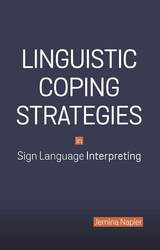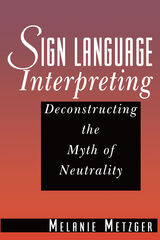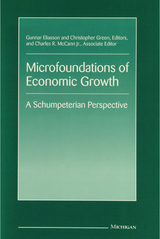2 books about Sign Language Interpreting

Linguistic Coping Strategies in Sign Language Interpreting
Jemina Napier
Gallaudet University Press, 2016
This ground-breaking work, originally published 15 years ago, continues to serve as the primary reference on the theories of omission potential and translational contact in sign language interpreting. In the book, noted scholar Jemina Napier explores the linguistic coping strategies of interpreters by drawing on her own study of the interpretation of a university lecture from English into Australian Sign Language (Auslan). A new preface by the author provides perspective on the importance of the work and how it fits within the scholarship of interpretation studies.
The concept of strategic omissions is explored here as a tool that is consciously used by interpreters as a coping strategy. Instead of being a mistake, omitting part of the source language can actually be part of an active decision-making process that allows the interpreter to convey the correct meaning when faced with challenges. For the first time, Napier found that omission potential existed within every interpretation and, furthermore, she proposed a new taxonomy of five different conscious and unconscious omission types. Her findings also indicate that Auslan/English interpreters use both a free and literal interpretation approach, but that those who use a free approach occasionally switch to a literal approach as a linguistic coping strategy to provide access to English terminology. Both coping strategies help negotiate the demands of interpretation, whether it be lack of subject-matter expertise, dealing with dense material, or the context of the situation.
Napier also analyzes the interpreters’ reflections on their decision-making processes as well as the university students’ perceptions and preferences of their interpreters’ linguistic choices and styles. Linguistic Coping Strategies in Sign Language Interpreting is a foundational text in interpretation studies that can be applied to interpreting in different contexts and to interpreter training.
[more]

Sign Language Interpreting
Deconstructing the Myth of Neutrality
Melanie Metzger
Gallaudet University Press, 1998
As with all professional interpreters, sign language interpreters strive to achieve the proper protocol of complete objectivity and accuracy in their translation without influencing the interaction in any way. Yet, Melanie Metzger's significant work Sign Language Interpreting: Deconstructing the Myth of Neutrality demonstrates clearly that the ideal of an interpreter as a neutral language conduit does not exist. Metzger offers evidence of this disparity by analyzing two videotaped ASL-English interpreted medical interviews, one an interpreter-trainee mock interview session, and the other an actual encounter between a deaf client and a medical professional.
Sign Language Interpreting relies upon an interactional sociolinguistic approach to ask fundamental questions regarding interpreter neutrality. First, do interpreters influence discourse, and if so, how? Also, what kind of expectations do the participants bring to the event, and what do the interpreters bring to discussions? Finally, how do their remarks affect their alignment with participants in the interaction? Using careful assessments of how these interviews were framed, and also re-interviewing the participants for their perspectives, this penetrating book discloses the ways in which interpreters influence these situations. It also addresses the potential implications of these findings regarding sign language interpretation in medical, educational, and all other general interactions. Interpreter trainers and their students will join certified interpreters and Deaf studies scholars in applauding and benefiting from the fresh ground broken by this provocative study.
Sign Language Interpreting relies upon an interactional sociolinguistic approach to ask fundamental questions regarding interpreter neutrality. First, do interpreters influence discourse, and if so, how? Also, what kind of expectations do the participants bring to the event, and what do the interpreters bring to discussions? Finally, how do their remarks affect their alignment with participants in the interaction? Using careful assessments of how these interviews were framed, and also re-interviewing the participants for their perspectives, this penetrating book discloses the ways in which interpreters influence these situations. It also addresses the potential implications of these findings regarding sign language interpretation in medical, educational, and all other general interactions. Interpreter trainers and their students will join certified interpreters and Deaf studies scholars in applauding and benefiting from the fresh ground broken by this provocative study.
[more]
READERS
Browse our collection.
PUBLISHERS
See BiblioVault's publisher services.
STUDENT SERVICES
Files for college accessibility offices.
UChicago Accessibility Resources
home | accessibility | search | about | contact us
BiblioVault ® 2001 - 2025
The University of Chicago Press









